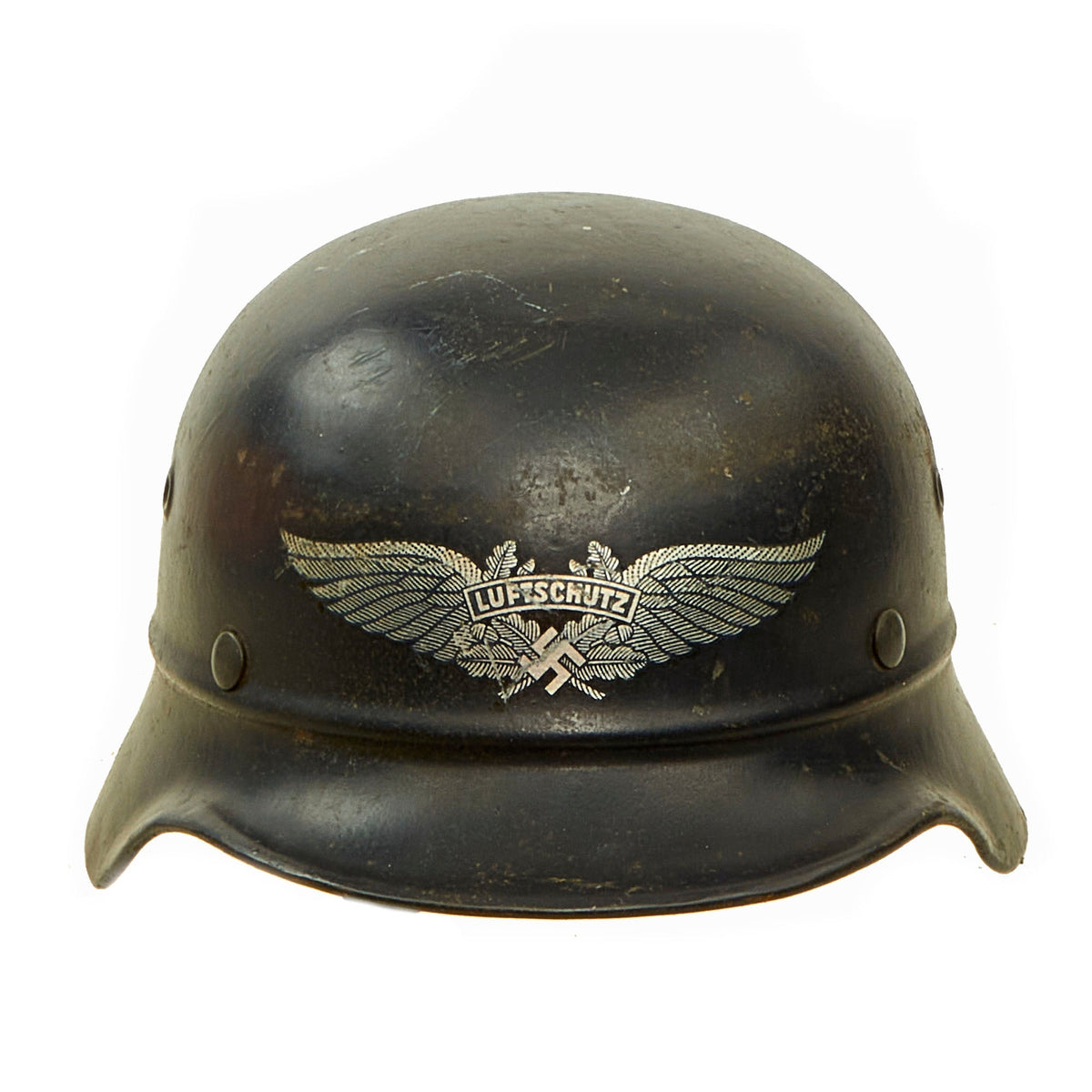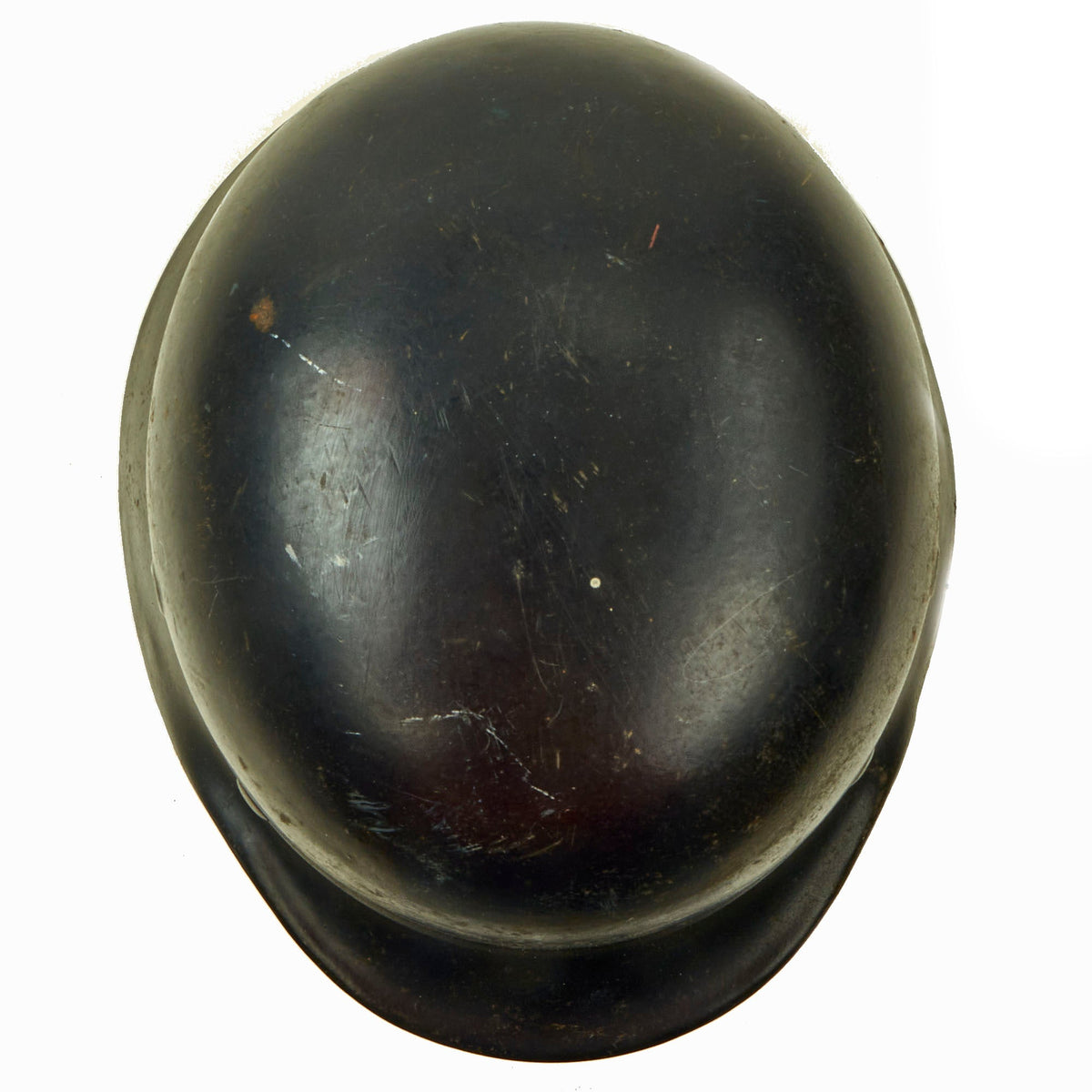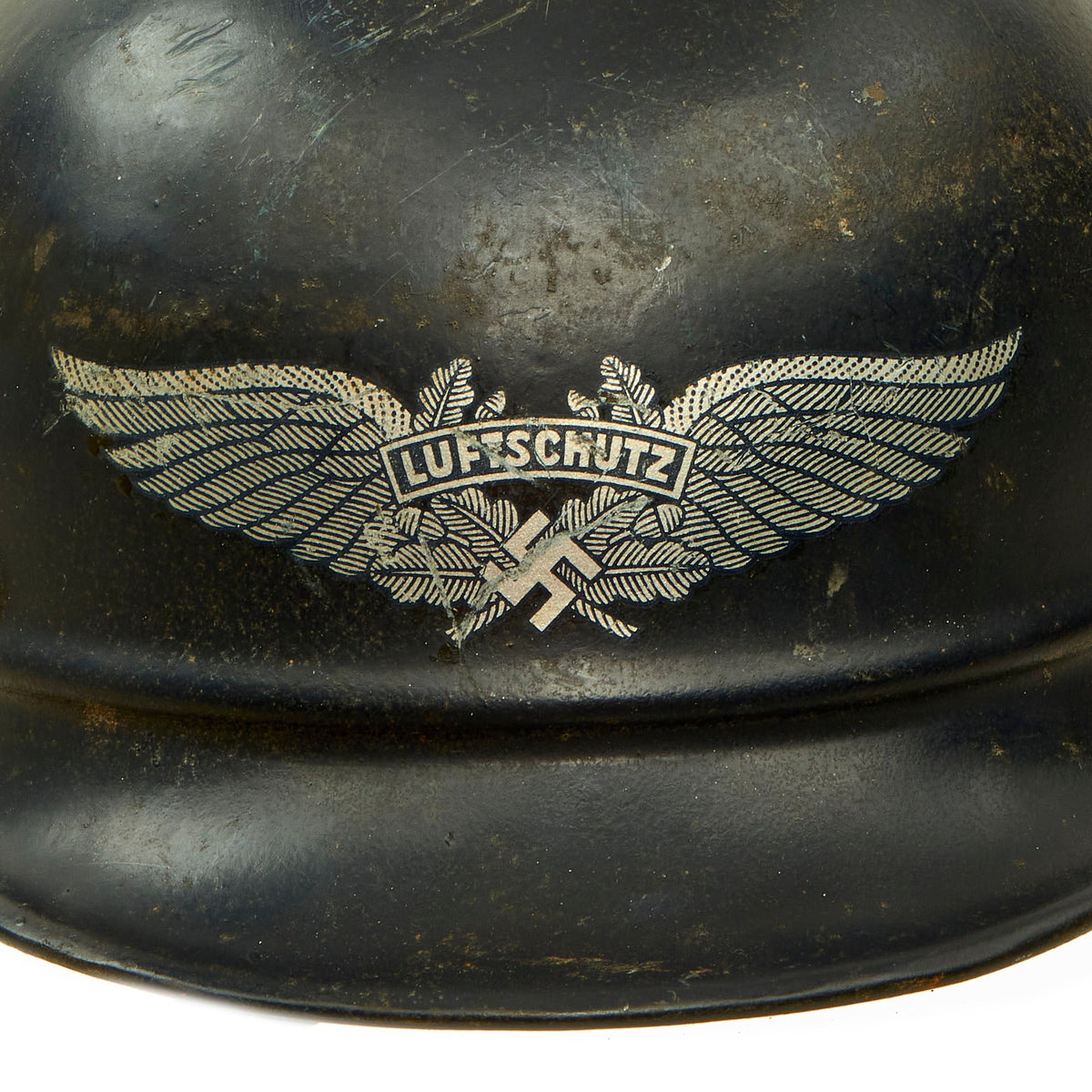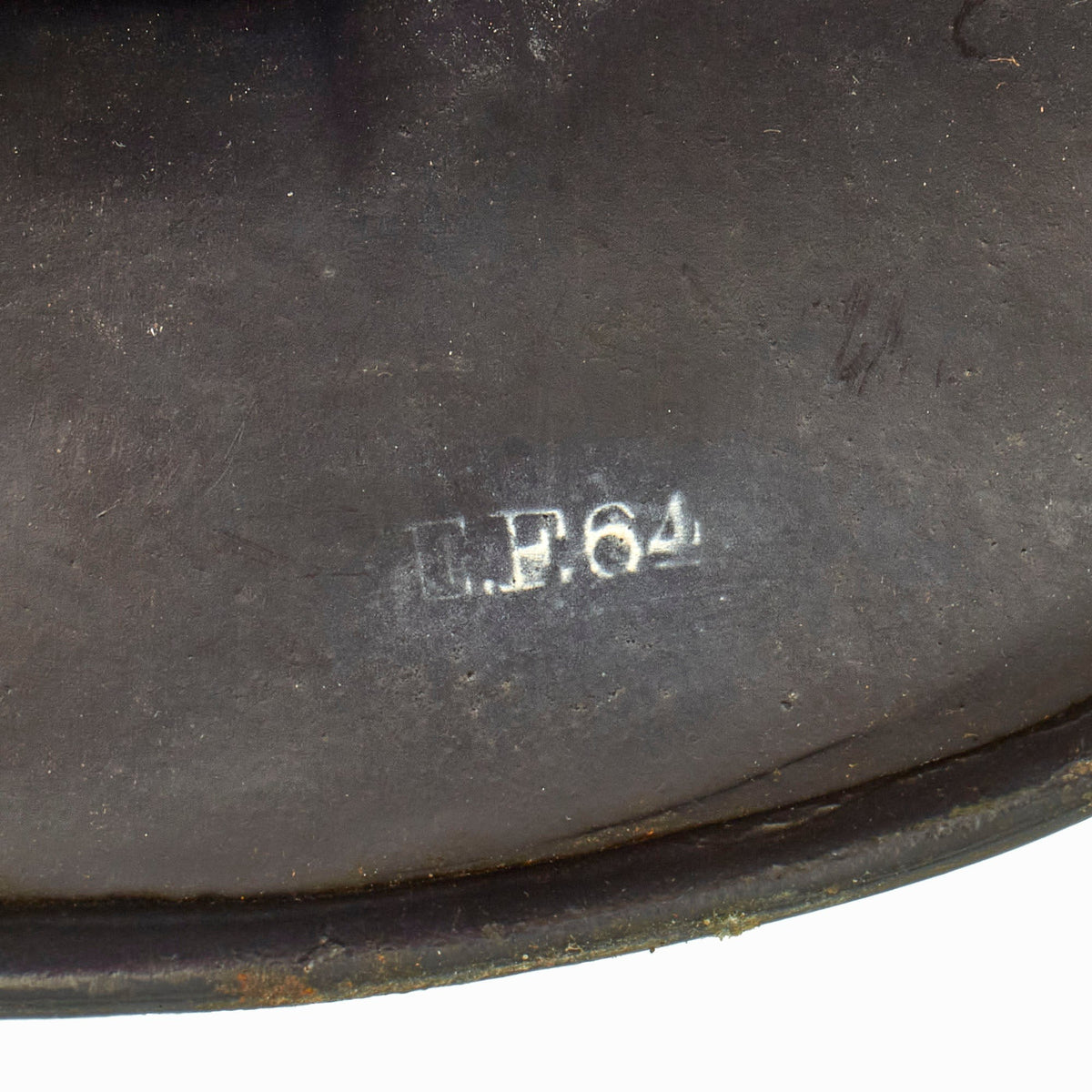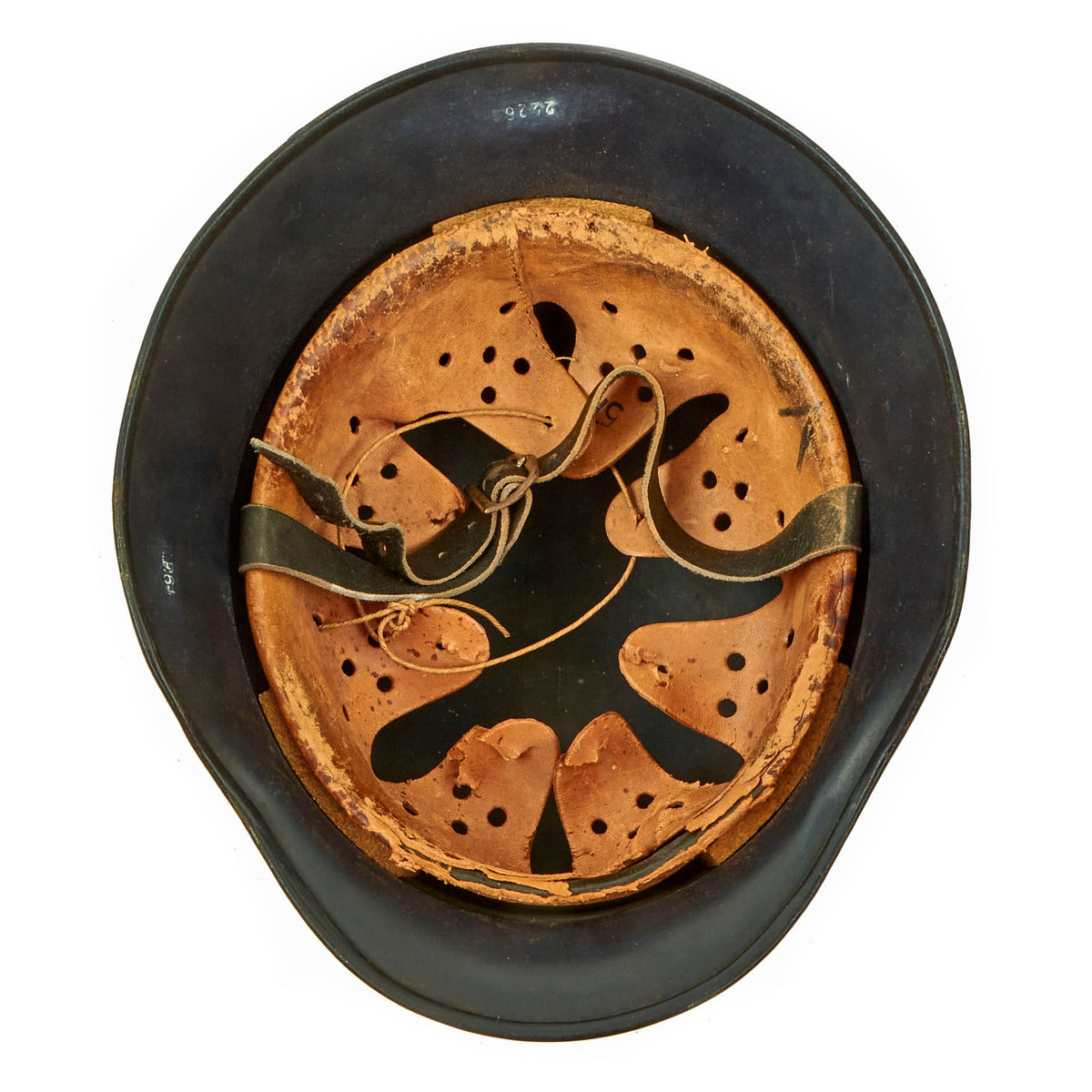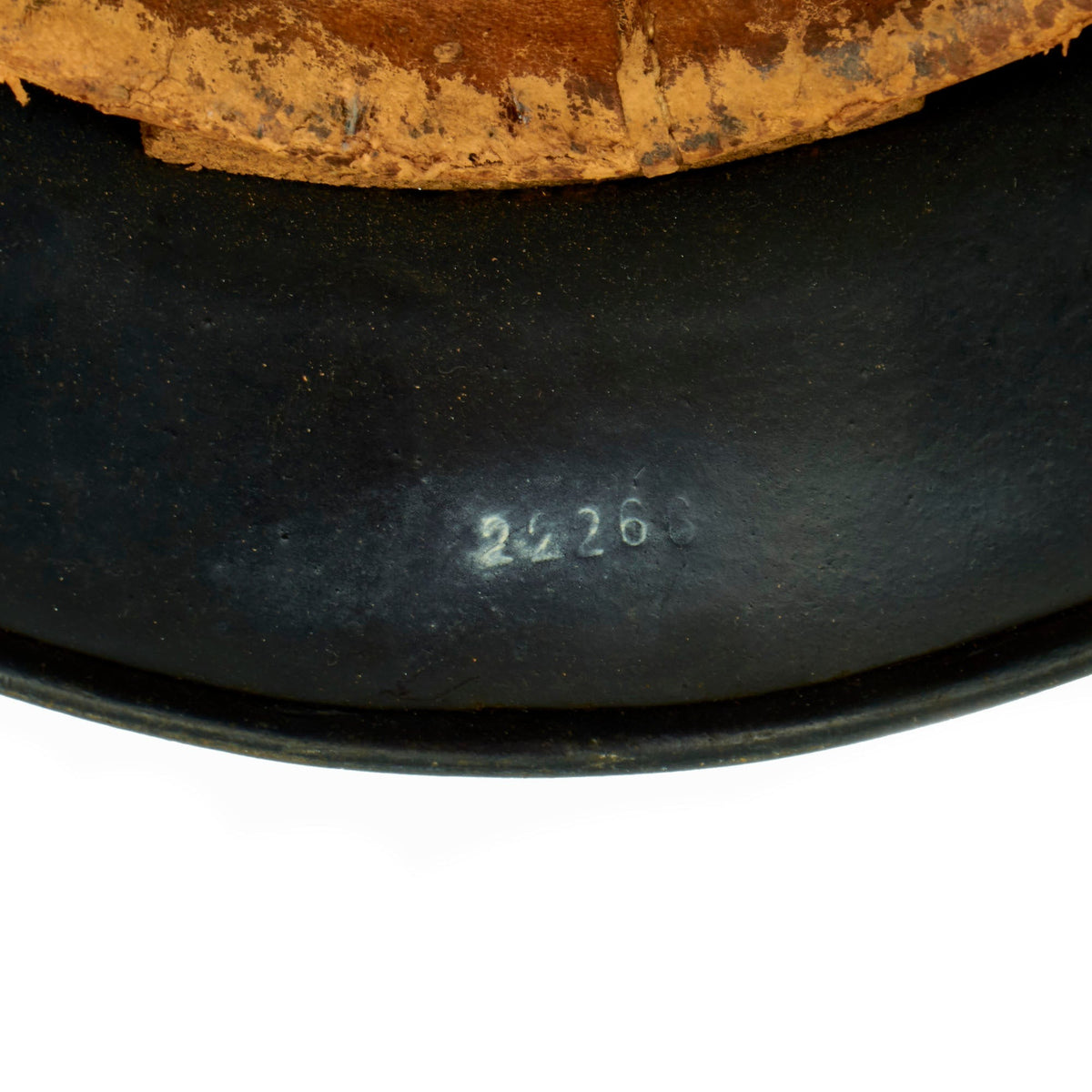Original German WWII Luftschutz Civil Air Defense Beaded M40 Helmet with 57cm Liner & Chinstrap – EF64 Original Items
$ 595,00 $ 178,50
Original Item: Only One Available. This is a very good condition example of a rare genuine steel construction M40 “Beaded” Third Reich helmet, outfitted for German WWII Luftschutz Civil Air Defense use. These helmets were essentially like the Military issue, however the steel was not as thick or as high quality. They were given a “bead” around the edge, to avoid mixing them up with the military version.
The exterior of this German helmet retains over 95% of the original dark blue paint, with some scuffing and light overall wear. There is definitely one of the best examples of a Beaded M40 Luftschutz shell we have seen recently. The Luftschutz decal is clean and about 95% complete, with only a few small scratches. There is very little yellowing of the enamel portion of the decal, so the silver color is still quite vibrant.
The reverse, interior, neck guard apron is batch number stamped 22266, and the interior, left side, apron has a stamped manufacturer’s code and size, E.F.64 indicating that indicating it was manufactured by Emaillierwerke AG, of Fulda Germany in size 64. Size 64 is a nice medium size that can accommodate liners from 56cm to 57cm or US 7 to 7 1/8. Size 64 shells are harder to find and are therefore more valuable to a collector.
The helmet comes complete with its original leather liner, which is unfortunately somewhat deteriorated. The leather is still mostly supple, however it is split around the front rim, so that the oil cloth layer can be seen. There is also deterioration at the rear, consistent with being stored on top of another period for a long period. The top tie is present but unfortunately torn through many of the “fingers”. The leather chin strap is still present, and actually in really good condition.
M40 Beaded Luftschutz helmets are one of the rarer varieties of the Luftschutz style and hard to find. This is a very good example, and sure to appreciate in value over the years.
Formed in late 1932 the Deutsches Luftschutzverband, (German Air Protection League), was a voluntary organization designed to provide civil air raid protection in large civilian centers. Shortly after AH ascension to power the Deutsches Luftschutzverband was restructured and placed under the supervision of the Reichsluftfahrtministerium, (National Air Ministry), under the control of Hermann Göring. On April 29TH 1933 the Deutsches Luftschutzverband was renamed RLB, Reichs Luftschutz Bund, (National Air Raid Protection League) and was given status as an official national organization tasked with all aspects of civil air raid defence. The RLB remained a voluntary organization with a small cadre of paid, full-time uniformed officials to oversee the organizations functions until June 1935 when obligatory service was introduced. Only the most basic uniform and equipment items were supplied to the cadre personnel, with the rest having to be bought personally by members. On September 26TH 1938 a specific helmet for RLB personnel was introduced that incorporated a raised horizontal “bead” between the visors and crown. These helmets commonly called the “Gladiator” style were supplemented with M35, M40 and M42 helmets that also incorporated a raised horizontal “bead” between the visors and crown. The Luftschutz also utilized a variety of captured helmets.
Presstoff (also Preßstoff or Pressstoff) is the German-language term for a type of ersatz or artificial leather used during the first half of the 20th century. Made of specially layered and treated paper pulp, Presstoff was durable and easily adapted to be used in place of leather, which under wartime conditions was rationed. First invented in the 19th century, it gained its widest use in Germany during the Second World War.
Presstoff use included but was not limited to binoculars cases and straps, horse tack, bayonet frogs, equipment belts, cap visors etc. In short, Presstoff could be used in almost every application normally filled by leather, excepting items like footwear that were repeatedly subjected to flex wear and/or moisture. Under these conditions Presstoff tended to delaminate and lose cohesion.
Fast Shipping with Professional Packaging
Thanks to our longstanding association with UPS FedEx DHL, and other major international carriers, we are able to provide a range of shipping options. Our warehouse staff is expertly trained and will wrap your products according to our exact and precise specifications. Prior to shipping, your goods will be thoroughly examined and securely secured. We ship to thousands clients each day across multiple countries. This shows how we're dedicated to be the largest retailer on the internet. Warehouses and distribution centres can be located throughout Europe as well as the USA.
Note: Orders with more than one item will be assigned a processing date depending on the item.
Before shipping before shipping, we'll conduct a thorough inspection of the items you have ordered. Today, the majority of orders will be delivered within 48 hours. The delivery time will be between 3-7 days.
Returns
The stock is dynamic and we cannot completely manage it because multiple stakeholders are involved, including our factory and warehouse. So the actual stock may alter at any time. It's possible that you may not receive your order once the order has been made.
Our policy is valid for a period of 30 days. If you don't receive the product within 30 days, we are not able to issue a refund or an exchange.
You can only return an item if it is unused and in the same state as the day you received it. You must have the item in its original packaging.
Related products
Uncategorized
Uncategorized
Uncategorized
Uncategorized
Uncategorized
Uncategorized
Armored Burgonet Helmet & Polearm from Scottish Castle Leith Hall Circa 1700 Original Items
Uncategorized
Uncategorized
Uncategorized
Uncategorized
Uncategorized
Uncategorized
Uncategorized
Uncategorized
Angolan Rebel 1970s era 60mm Inert Display Mortar from Angolan Civil War Original Items
